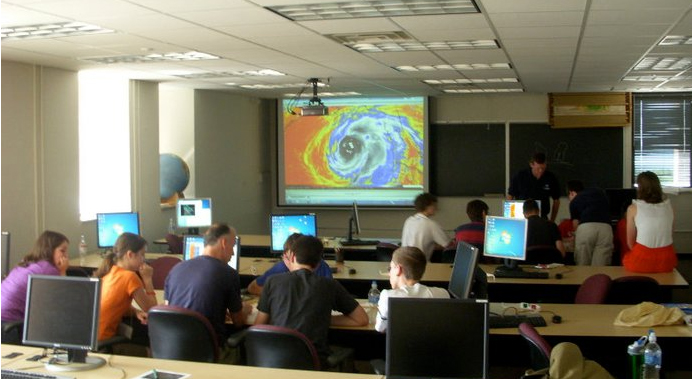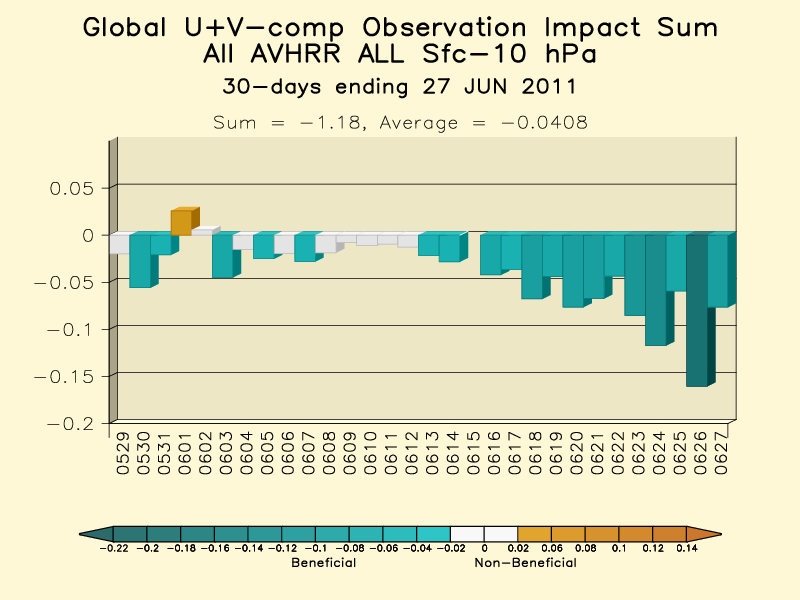
[ Archive ]

 |
ASPB and CIMSS Weekly Report
[ Archive ] |
 |
IN THE PRESS:
ITEMS FOR THE ADMINISTRATOR:
ITEMS FOR THE ASSISTANT ADMINISTRATOR:
ITEMS FOR THE OFFICE DIRECTOR, STAR:
19th Annual CIMSS High School Workshop held in Madison: Ten
high school students from as far away as Connecticut participated in
the 2011 Cooperative Institute for Meteorological Satellite Studies
(CIMSS) High School Workshop on Atmospheric, Earth, and Space Sciences,
held 26-30 June 2011 on the University of Wisconsin-Madison (UW) campus.
The workshop included field trips to WKOW-TV 27, Weather Central, LP,
the National Weather Service (NWS) forecast office in Sullivan, WI, the
UW Geology Museum, Washburn Observatory, the UW Planetarium, the
“Satellites See Wisconsin” exhibit at the Madison airport, Devil’s Lake
State Park and the surrounding area for a tour of geologic features, and
Madison’s Lake Mendota for a limnology dredging expedition. Numerous
presentations were given at the Space Science and Engineering Center
(SSEC) including Earth System Science, the 3D Globe, daily weather
briefings, basic and satellite meteorology, tropical weather and
forecasting (a crowd favorite), GIS (geographical information system)
and remote sensing, weather at Antarctica, climate change, and aviation
weather. Mentor-guided training and student demonstrations were done in
the traditional half day session with the SSEC Man-computer Interactive
Data Access System (McIDAS). (P. Rowley, CIMSS, 608-263-1336,
patrick.rowley@ssec.wisc.edu; G. S. Wade, E/RA2, 608-263-4743,
gary.s.wade@noaa.gov)
 (Click image to enlarge)
(Click image to enlarge)
Figure caption: CIMSS scientists M. Sitkowski and D. Herndon work with
students during the hurricane forecasting session of the CIMSS High
School Workshop, on 28 June 2011.
Manuscript on IR Surface Emissivity Impact Published: An
manuscript entitled "Surface emissivity impact on temperature and
moisture soundings
from hyperspectral infrared radiance measurements" has been published in
the Journal of Applied Meteorology and Climatology (2011, Vol. 50,
p.1225 - 1235), co-authors are Z. Yao, Jun Li, Jinlong Li and H. Zhang
(CIMSS). (Jun Li, CIMSS, Jun.Li@ssec.wisc.edu, 608-262-3755)
Meeting of the THORPEX DAOS Working Group: The World Meteorological Organization THORPEX International Working Group (WG) on Data Assimilation and Observing Systems (DAOS) met at the Met Office in Exeter, U.K. The WG assembles annually to discuss the latest advances and issues associated with the global observing system and data assimilation in numerical weather prediction (NWP). This meeting was highlighted by discussion on formalizing a statement on targeted observations and impacts. The WG will also likely lead the organization of the next international conference on data impacts in NWP, tentatively scheduled for May, 2012 in Sedona, Arizona. (C. Velden, CIMSS, 608-262-9168)
ITEMS FOR THE DIVISION CHIEF, CoRP:
Presentation at AMS Annual Teachers Training Meeting: Tom Whittaker (CIMSS) presented the newly completed, on-line, interactive Conceptual Energy Model (CEM) tool on 27 June at the annual K-12 American Meteorological Society (AMS) Teacher's Training, held this year in Green Bay, Wisconsin. The original process (algorithm) for the CEM was developed by the AMS Education group in the 1990's, but had never been realized as a computer program previously. All computations were done manually, thus limiting the opportunity to more extensively explore the Model. The AMS fully supported this development. (T. Whittaker, CIMSS, 608-262-2759) (Click image to enlarge)
(Click image to enlarge)GOES-R Sulfur Dioxide and Fog 100% Maturity ATBD’s Submitted: The 100% maturity Sulfur Dioxide Detection and Fog/Low Cloud Detection Algorithm Theoretical Basis Documents (ATBD’s) were submitted to the GOES-R Algorithm Integration Team (AIT) this week. The ATBD’s contain a complete description of the algorithms, which utilize state-of-the-art remote sensing techniques to detect sulfur dioxide clouds and fog/low stratus clouds. (M. Pavolonis, E/RA2, 608-263-9597, Mike.Pavolonis@noaa.gov; C. Calvert, CIMSS, 608-262-1023)
VISITORS:
NEXT WEEK:
LOOKING AHEAD:
| Archived Weeklies Page | Submit a report item |